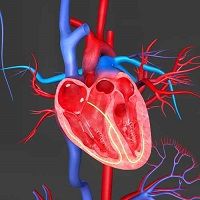ATRIA Score Accurately Identifies Patients at Low Risk for Stroke
A new tool for assessing the risk of thromboembolic events in patients with atrial fibrillation performed better than the existing standard in a large retrospective analysis. ATRIA risk scores were less likely than CHA2DS2-VASc scores to mistakenly characterize patients as "high risk" and, therefore, to lead to the overuse of anticoagulation.

A new tool for assessing the risk of thromboembolic events in patients with atrial fibrillation (AF) performed better than the existing standard in a large retrospective analysis. ATRIA risk scores were less likely than CHA2DS2-VASc scores to mistakenly characterize patients as “high risk” and, therefore, to lead to the overuse of anticoagulation.
Researchers compared the ability of the 2 risk calculation tools to predict ischemic stroke by using records from 60,594 patients who were diagnosed with AF between 1998 and 2012 and then followed (for a mean period of 2.1 years) until they died, suffered a stroke, began receiving warfarin or reached the end of the study period.
Overall, the annualized stroke rate was 2.99%. Some 3,751 ischemic strokes occurred over the course of 125,296 patient-years, and ATRIA scores did better than CHA2DS2-VASc scores in predicting which patients would suffer those strokes. C statistics — i.e. the probability that something predicts events better than chance — were 0.70 for the ATRIA risk score (95% confidence interval [CI], 0.69-0.71) and 0.68 for the CHA2DS2-VASc risk score (95% CI, 0.67-0.69). The study team also calculated C statistics for the older CHADS2 score, which performed exactly the same as the newer CHA2DS2-VASc measure.
Further analysis found that the net reclassification improvement for using ATRIA scores rather than CHA2DS2-VASc scores was 0.23 (95% CI, 0.22-0.25).
The primary failing of the CHA2DS2-VASc scoring system was that it classified far too few patients as low-risk. CHA2DS2-VASc scores pegged 82.6% of the patients as high-risk and only 6.6% of patients as low-risk. ATRIA scores, on the other hand, pegged 49% of patients as high-risk and 40% of patients as low-risk.
“The ATRIA score performed better in the U.K. Clinical Practice Research Datalink AF cohort. It more accurately identified low-risk patients than the CHA2DS2-VASc score, which assigned these patients to higher-risk categories,” the study authors wrote in the Journal of the American College of Cardiology. “Such reclassification of stroke risk could prevent overuse of anticoagulants in very low stroke risk patients with AF.”
The CHA2DS2-VASc scale assigns AF patients 1 point each for a history of Congestive heart failure, Hypertension, Diabetes mellitus, and Vascular disease, along with a single point for Age between 65 and 74 and Sex Category female. It also assigns patients 2 points for a history of Stroke, transient ischemic attack or thromboembolism and 2 points for Age over 75 years. Current guidelines from several organizations recommend anticoagulation for any patient with a score of 2 or more.
The ATRIA (Anticoagulation and Risk Factors in Atrial Fibrillation) scoring tool assigns points based on 4 age categories (as well as an interaction of age and prior stroke), female sex, renal function and a history of diabetes, congestive heart failure, hypertension.
Current standards have come under attack from some quarters for recommending anticoagulation to too many patients. For example, all AF patients over age 75 score at least 2 points, no matter how good their health, and are thus directed to use anticoagulation. Some researchers say analysis of actual risk does not justify this. Others argue that anticoagulation provides significant benefits to patients, even those with a low absolute risk of stroke, and that the risks are low enough to justify aggressive anticoagulation.